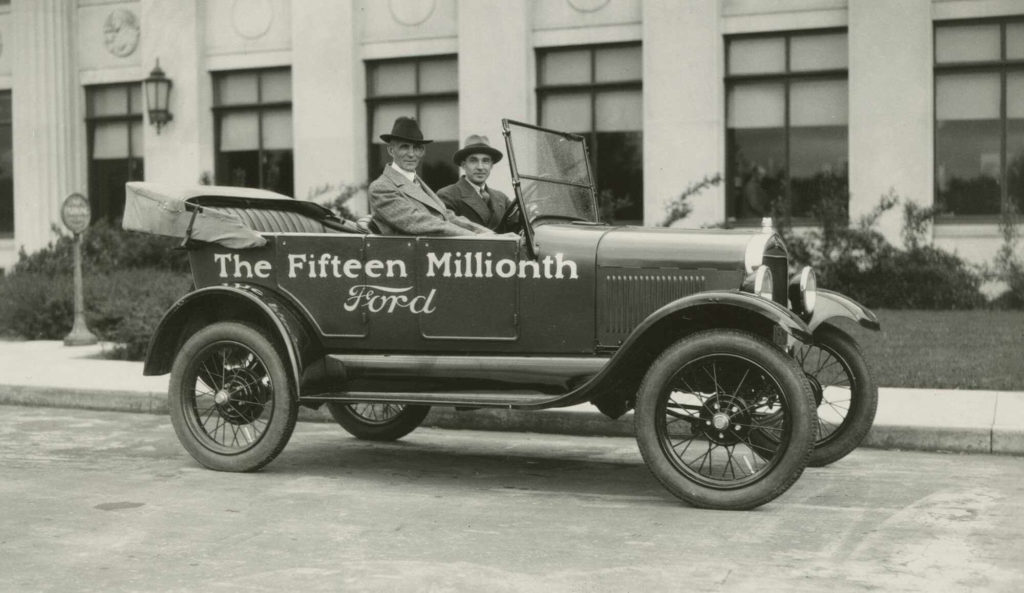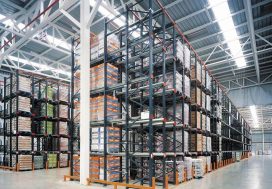
- Lesson 1. To use resources sparingly
- Lesson 2. To plan warehouse stock
- Lesson 3. To be able to delegate
- Conclusions: What can we learn from Henry Ford’s experience?
Henry Ford was an American industrialist, inventor, founder of the Ford Motor Company. The automaker was founded in 1903 and is still one of the largest and most profitable. The company’s success became possible due to the ideas of its founder. Henry Ford gave particular attention to warehousing logistics. Thanks to the effective inventory management and usage of storage facilities the company could reduce costs and optimize production. The products came in the market regularly, meeting the customer demand, and bringing huge profits.
In this article, we will consider 3 success stories of Henry Ford that influenced positively on his own company. These lessons will be useful for entrepreneurs who want to establish efficient processes in the warehouse logistics of their businesses.
Lesson 1. To use resources sparingly
Reducing the company’s costs is an effective way to increase the profitability of the enterprise. Process improvement plays an important role in resource-saving. Lean approach (another name – lean logistics, we mentioned it in our article) is widely used in warehouse logistics, and based on the same approach to production. Another successful automotive manufacturer Toyota Motor Corporation introduced lean production. Although few people know, that Taiichi Ohno, an executive of the automaker, drew inspiration for this approach from Henry Ford’s ideas.

Ford was at the origin of the world’s automobile industry. At the beginning of the last century, cars were only a few and quite expensive. Henry Ford decided to create a car that would be affordable for everyone. But because of the hand assembly of automobiles, the production process was time-consuming and expensive. So Ford decided to introduce the assembly line technique. He divided the production into stages. Henry Ford assigned staff to each of them, and they assembled a car as it moved without waste of time and effort.
After acceleration of manufacturing and optimization of workers’ labor Ford continued his experiments on cost-cutting of his product without loss of quality. This quote by Henry Ford is widely known:
«Any customer can have a car painted any color that he wants so long as it is black»
The same painting was much cheaper. And this is just one example of optimizing production. As a result, cars were produced in large quantities and their price was pleasant for a buyer.
Taiichi Ohno built his management system on the belief that any loss in production is a problem. This approach has been rather effective in manufacturing and spread to other spheres. Its main ideas relating to warehouse logistics are following:
- To reduce labor-related and time costs by moving products through the warehouse;
- To optimize placement of product;
- To use storage space rationally;
- To minimize stocks;
- To rationalize warehousing processes constantly;
- To encourage staff’s initiative for optimization of warehousing operations.
Nowadays companies have to use the most efficient methods to gain a competitive advantage. In warehouse logistics, aspects such as speed and quality are essential. The principles of lean logistics help to optimize warehouse operations and to make services more attractive to clients.
Lesson 2. To plan warehouse stock
Henry Ford paid much attention to the development of a streamlined production chain from purchasing raw materials to delivering a car. It was a real breakthrough. At that time logistics was considered to be a static function that consists mainly of transportation and storage of goods. The managers of the large enterprises had no idea how much this could affect profitability.
In the field of warehouse logistics, Ford applied the same principle that he used for his entire enterprise: to solve a problem quickly, efficiently, cheaply, and without loss of quality. The necessary production materials were always delivered to Ford’s plants in the required quantities. The founder of the automaker explained that if the ship delivers the ore in time, the ore will be then sent to the factory, and in 48 hours the car will be made and soon bought. This idea can now be interpreted in such a way: getting the right parts at the right time and in the right quantity in the production line will reduce or eliminate costs. This also has an impact on warehouse logistics: if the raw material is immediately turned into a product and enters the market, there is no need to rent or buy a warehouse, to keep a record of stocks, to worry about the safety of raw materials. It was also not cost-effective to store a lot of manufactured cars.
In his book « My Life and Work» Henry Ford formulated his perspective of this situation:
«We can no more afford to carry large stocks of finished than we can of raw material. Everything has to move in and move out.»
He realized that keeping his product in a warehouse for a long time would not meet the customer demand, and his company would lose profit.
On the other hand, Henry Ford understood that it was necessary to have safety stock. For example, once a factory that supplied parts to the Ford Motor Company burned down. However, the company could not stop the production of cars. Only because the stock remained in the warehouse Ford’s enterprise avoided delays until the supply chain was restored.
This example shows why it is so important in warehouse logistics to have a safe stock. In case of supply chain disruptions, it’ll help to avoid setbacks and the company will keep up its profit.
Lesson 3. To be able to delegate
Henry Ford was a brilliant manager, but even he made a serious mistake. Ford created the world’s first multi-level vertically integrated company. The point is that he tried to control the movement of his products at all stages and to check personally the performance of all functions. So he bought coal mines, iron-ore deposits, glass-blowing factories, and even rubber plantations.

In 1927, however, the other automaker, General Motors Company captured 43.5% of the global car market; Henry Ford’s company had less than 10%. The thing is Alfred P. Sloan Jr., the president of Ford’s competitor, used a completely different strategy. He considered outsourcing non-core tasks to specialized companies is more effective. Thanks to this approach General Motors could gain an advantage over the Ford Motor Company.
Ford realized his mistake, and independent companies became eventually full participants of the Ford Motor Company supply chain. Corporate priorities have shifted from ownership control to control on a partnership management basis. Due to this fact, the company could invest in its manufacturing.
Conclusions: What can we learn from Henry Ford’s experience?
Henry Ford was a real innovator of his time. He did not invent completely new solutions, but he optimized and simplified as much as possible existing production processes. In the field of warehouse logistics, he introduced the same principles that he used in his factories. They are: availability of the necessary quantity of products, efficient usage of human resources and storage space, owning of a safety stock as a guarantee of uninterrupted production.
Of course, Henry Ford’s success story would be incomplete without his founder’s flexibility and adaptation to ever-changing external circumstances. When he realized that even his successful company could not be completely self-reliant, he began to delegate tasks. In modern business, outsourcing non-core functions, such as warehouse logistics, increase the efficiency and profitability of the company.




